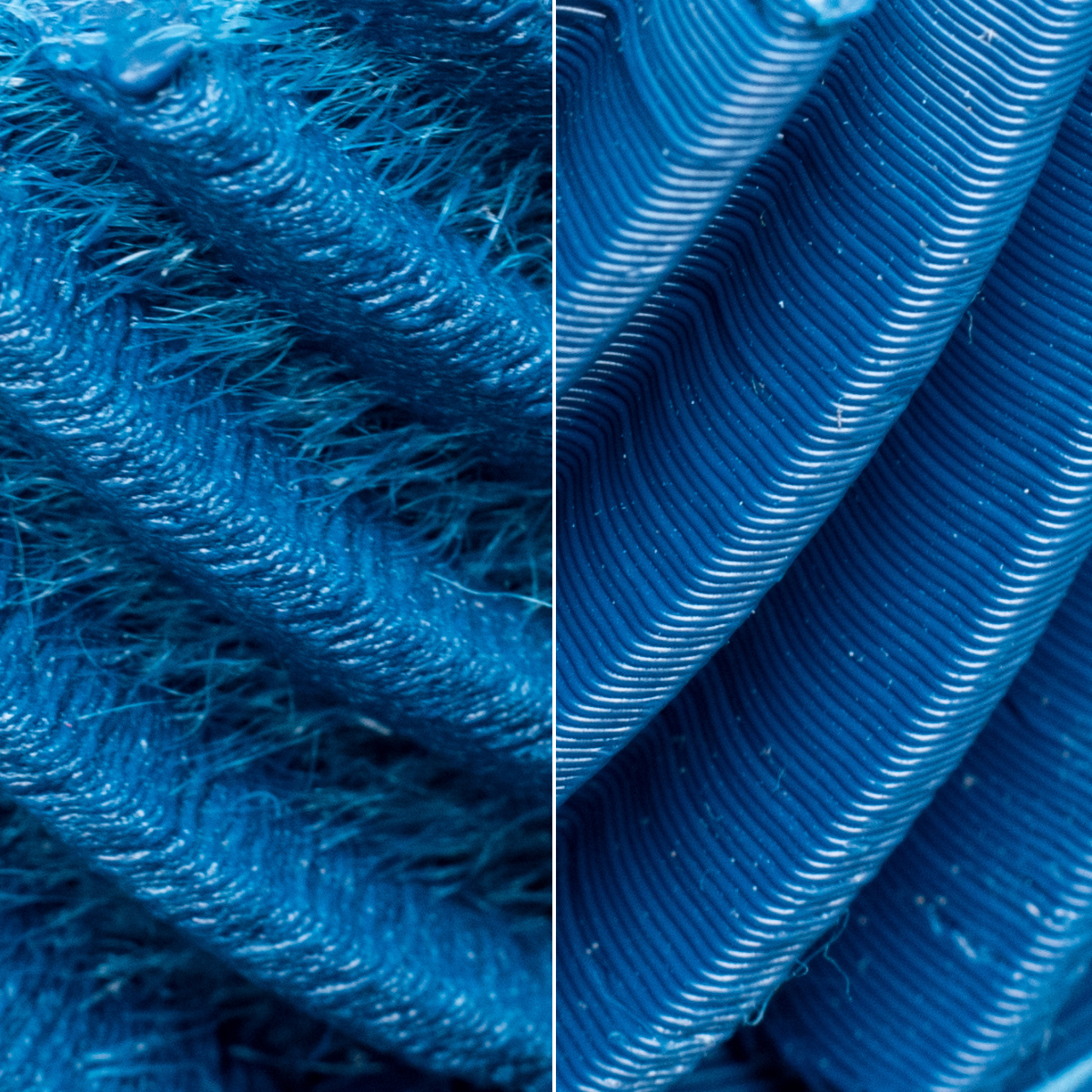
Leveraging In-line Drying for Superior Strength in 3D Printed Nylon Parts
A recent study conducted by Thought3D has delved into the impact of filament drying methods on the mechanical strength of 3D printed nylon parts. The study compared the performance of parts printed with untreated nylon, oven-dried nylon, and nylon dried using Drywise's in-line drying technology.
Mechanical Properties of Nylon
Nylon, a versatile and robust thermoplastic, is a popular choice in the realm of Fused Deposition Modeling (FDM) 3D printing. Its high strength-to-weight ratio, flexibility, and resistance to wear and tear make it an ideal material for a wide range of applications, from functional prototypes to end-use parts in industries such as automotive, aerospace, and medical devices. However, nylon's hygroscopic nature, which leads it to absorb moisture from the environment, can pose challenges to achieving optimal print quality.
When nylon materials absorb moisture from the environment, the mechanical properties undergo significant changes due to the nature of the material and the interaction with water molecules. Water molecules can form hydrogen bonds with the amide groups in nylon, disrupting the intermolecular forces and the crystalline structure of the polymer. This causes the nylon chains to become more flexible, resulting in a decrease in stiffness and strength.
Additionally, the absorbed water molecules act as a plasticizer, effectively reducing the glass transition temperature (Tg) of nylon. The Tg is the temperature at which a material transitions from a rigid, glassy state to a more rubbery state. The presence of water lowers the Tg of nylon, making it more susceptible to deformation and reducing its dimensional stability.
Thus any object made of nylon, whether produced via additive or subtractive manufacturing tends to become less rigid and more ductile on absorption of moisture. Figure 1 shows the mechanical properties of dry Addigy F1030 versus that of conditioned Addigy F1030. This nylon is conditioned in an environment set at 50% RH and 23 °C for a minimum of 16 hours and the effect this has on the nylon material is remarkable. The yield strength of the nylon material is reduced by more than half while the tensile modulus (stiffness) of the conditioned material is around 25% of that of dry material. On the other hand, the ductility of the material increases on conditioning as shown by the marked increase of the elongation at yield. This is a desired effect in nylon materials which is accounted for in the design process as it increases the ductility and toughness of the material.

Nonetheless, in the case of FDM printed parts, moisture can have a detrimental and undesirable effect. If moisture is absorbed by the material (filament) prior to printing it can lead to a significant effect mechanical properties of printed parts, apart from the effects on surface finish and dimensional accuracy.
When the filament with absorbed moisture is heated during the printing process, the water molecules trapped within the material vaporize and form voids. These voids can create weak points and reduce the overall structural integrity of the part. Moisture in filament can also cause issues related to filament extrusion. Furthermore, as the filament passes through the hot end of the 3D printer, the absorbed moisture can also rapidly turn into steam. This steam can disrupt the flow of the molten filament, leading to inconsistent extrusion and uneven layer deposition. Consequently, this can result in poor layer adhesion in the printed parts.
Mechanical Properties of Wet and Dried Nylon in 3D Printing
Tests
The tensile strength, stiffness and elongation of test specimen printed in two orientations (Figure 2) was investigated. When the raster lines are printed parallel to the loading direction during tensile loading, the tensile load will be applied along the extruded filament path and would thus represent the strength of the material itself. On the other hand when the raster lines are printed perpendicular to the loading direction during tensile loading, the tensile loading force would be applied between each layer line and thus the strength of the part will be dictated by the adhesion between the extruded paths.
Results
Wet nylon, with a moisture content of 3%, resulted in parts with significantly lower tensile strength and stiffness compared to those printed with dried filaments. The tensile strength of parts printed with wet nylon was about 60% of that of the oven-dried samples in the perpendicular direction, and 75% in the parallel direction (Figure 3). The stiffness was even more affected, with wet samples showing only 40% and 80% of the stiffness of the oven-dried samples in the perpendicular and parallel directions respectively (figure 4).
Drywise's in-line drying technology also outperformed traditional oven drying. In fact, parts printed with Drywise in-line dryer showed an increase both the tensile strength and stiffness of about 7% for perpendicular and 12% for parallel prints.

Figure 3: Ultimate tensile stress of perpendicular and parallel loaded testing samples printed with Addigy ID1030 Nylon material

Figure 4: Young’s Modulus of perpendicular and parallel loaded testing samples printed with Addigy ID1030 Nylon material
Based on these results it can also be concluded that the presence of moisture in the filament not only affected the material properties but also weakened the bonds between extruded paths, leading to premature failure at localised points. This is due to the fact that the perpendicular samples show a greater drop in mechanical properties when compare to the dried samples than the parallel ones.
Superior Effect of In-Line Drying
The superiority of Drywise's in-line drying technology can be attributed to its ability to maintain a consistently conditioned filament throughout the printing process. The drying process is constantly monitored resulting in parts with improved surface finish, dimensional accuracy, and enhanced mechanical strength.
Figure 5 - Simplified drying process with Drywise
Figure 5 shows how inline drying works, the filament passes through a heated path which is continuously cycled with dried air, thus rapidly pulling out moisture from the filament. Only the segment of material inside the device filament path is dried, making the task of drying material much more efficient and enabling consistent material conditioning.
There are other clear differences integrated into Drywise technology that collectively give it a distinctive edge over commonly used drying solutions.
-
Ready to print: Unlike other drying methods which require at least one day to dry a filament, when using Drywise, you are ready to print in less than an hour eliminating downtime and the need for pre-planning.
-
One Cycle Drying Throughout the Lifetime of the Spool: Drywise is uniquely designed to dry filament in-line during the 3D printing process. This means that the filament is dried just once, even when only a portion of the spool is used for a print job. This eliminates the need for repeated drying cycles, which are often required with other methods when print jobs are spaced out over time. This one-time drying process not only saves time and energy but also minimises the risk of material degradation that can occur due to repeated heating and cooling cycles associated with oven drying.
-
Certified Material Profiles and Drying Settings: Drywise is equipped with pre-calibrated drying profiles for various materials, eliminating the need for guesswork. These profiles, based on extensive research and testing, ensure each material is dried for the best print quality. Furthermore, Drywise simplifies the user experience by automatically adjusting the drying algorithm based on the selected material profile. This means users don't have to worry about the right drying parameters - Drywise ensures that the filament is always dried under the ideal conditions.
Drywise's in-line drying technology offers a significant advantage in printing stronger, more reliable nylon parts in FDM 3D printing. It's a game-changer for engineers and professionals who value quality and reliability in their 3D printed parts


